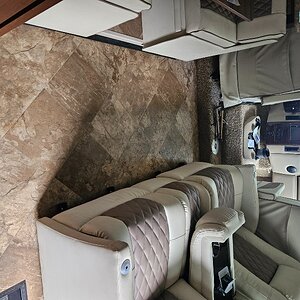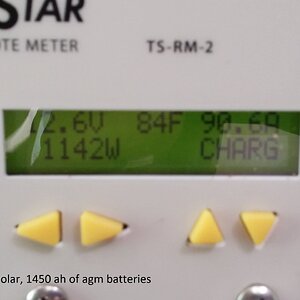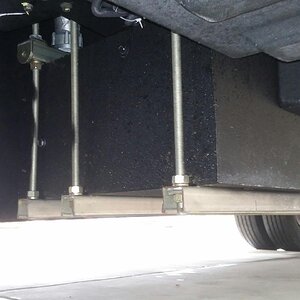MFJ
RVF Regular
- Joined
- Apr 18, 2023
- Messages
- 23
- Location
- PA
- RV Year
- 2023
- RV Make
- Cherokee Grey Wolf
- RV Model
- 25RRT
- RV Length
- 30'8"
- TOW/TOAD
- F150 Lariat
- Fulltimer
- No
So I have a question I wanted to run by this group. A few weeks ago my wife and I traded in for a new trailer. This one's a step up from our old pop-up, but except for the sewage uses all the same connections. At least I thought it did. We're planning on a trip next week so I took a generator and water hose out to run everything on the trailer to make sure there were no surprises. Everything went fine, but I noticed something with the power connection to the trailer.
Some googling told me that my trailer uses a NEMA L5-30 plug, where the old trailer used a traditional NEMA TT-30 one. Basically these:


I was worried I had to buy all new power cords, but no the one it came with has a TT-30 male and L5-30 female, so I can still plug it in at any campground no problem (and don't have to waste more money). Everything I've read basically has these two plugs rated for the same voltage and amperage, which is where my question is. Why would they design a trailer with this plug? Is there some sort of advantage that I'm unaware of?
Some googling told me that my trailer uses a NEMA L5-30 plug, where the old trailer used a traditional NEMA TT-30 one. Basically these:
I was worried I had to buy all new power cords, but no the one it came with has a TT-30 male and L5-30 female, so I can still plug it in at any campground no problem (and don't have to waste more money). Everything I've read basically has these two plugs rated for the same voltage and amperage, which is where my question is. Why would they design a trailer with this plug? Is there some sort of advantage that I'm unaware of?












